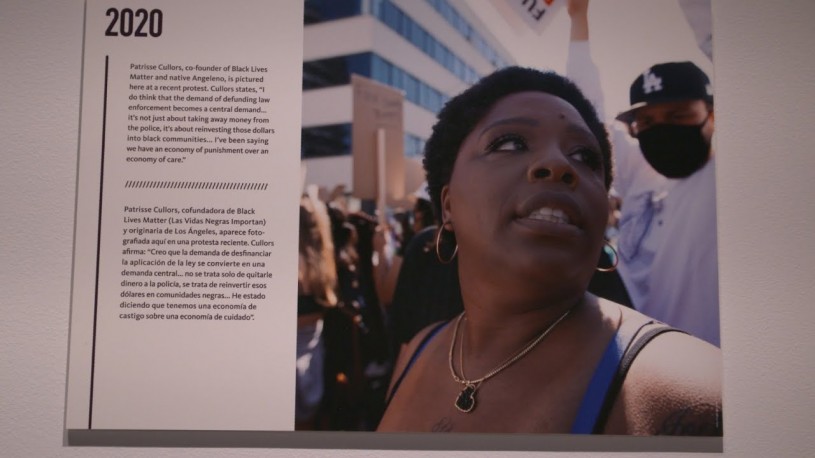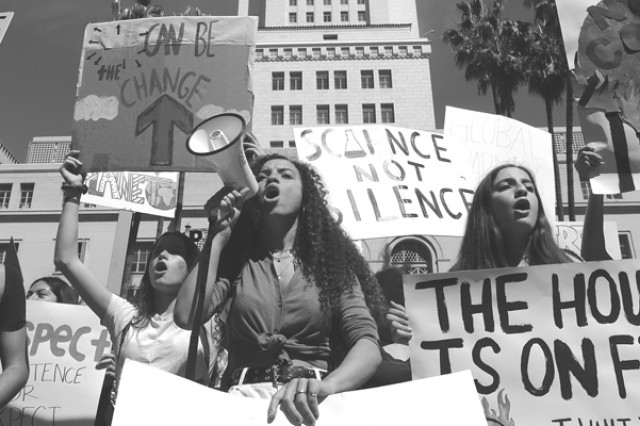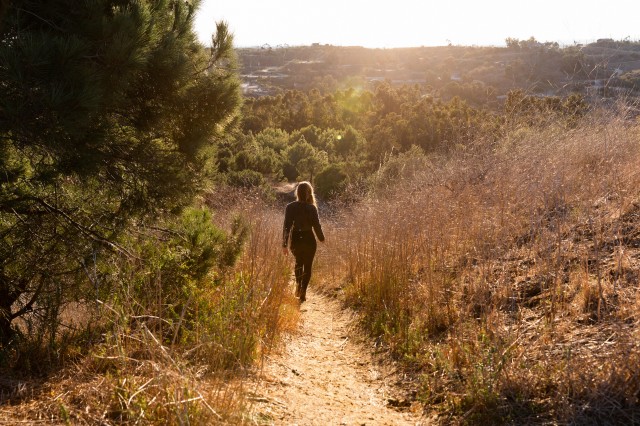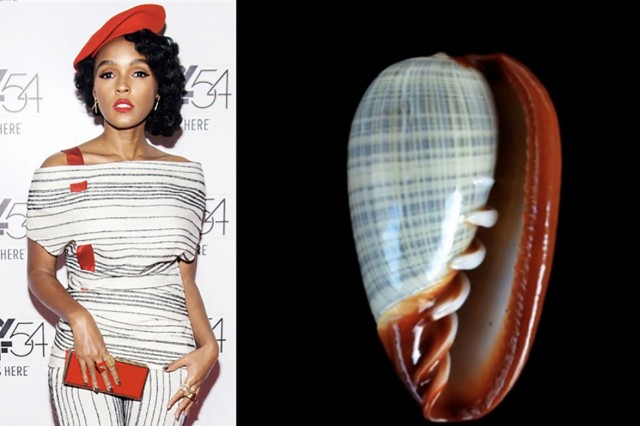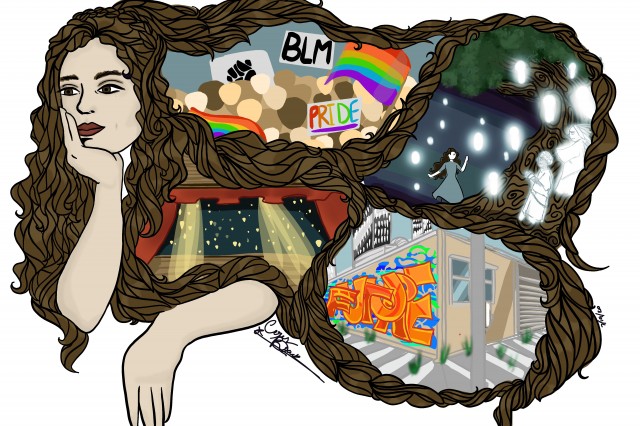
The Hart Museum remains closed. Los Angeles County has approved a plan to transfer the William S. Hart Museum and Park from the County to the City of Santa Clarita.
The Magic Behind the Making of Rise Up L.A.
An exhibition about women earning the right to vote, and flexing that power for a century—and counting
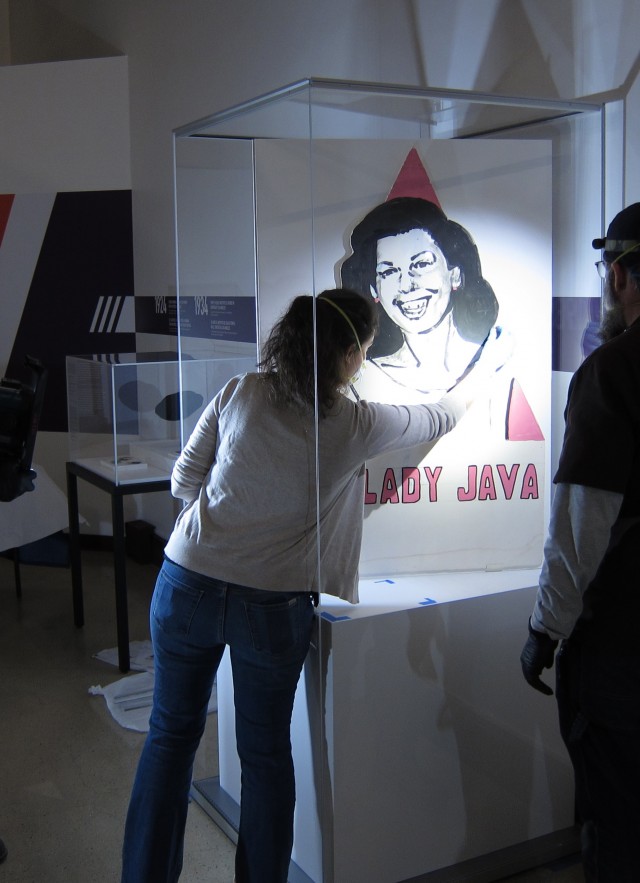
Museum exhibitions are not solo productions. They are like ensemble dances, with each member of the troupe deftly performing their part in coordinated time, all before the curtain goes up. “Our team is so multitalented, each with rather narrow job roles, but everybody brings their talents to bear, which is truly impressive,” says Molly Sjoberg, NHM’s Exhibition Project Manager, one of the nimble choreographers of the special exhibition Rise Up L.A.: A Century of Votes for Women. This particular exhibition was produced in an exceptional way, unlike any other in the museum’s 108 year history, because the coronavirus pandemic disrupted the customary mode of operation. The conventional processes of putting a physical show together—with the whole team under one roof—went out the window in the spring, midway through the enterprise. With such a quick pivot, everyone needed to be on their toes.
The 20-person team who pulled it off—including the exhibition developer, History Department collections managers, content specialists, an intern, conservators, designers, fabricators, lighting, media, and sound specialists—powered through for months to tell a sweeping story: On August 18, 1920, the Nineteenth Amendment to the United States Constitution was ratified, officially guaranteeing women the right to vote.
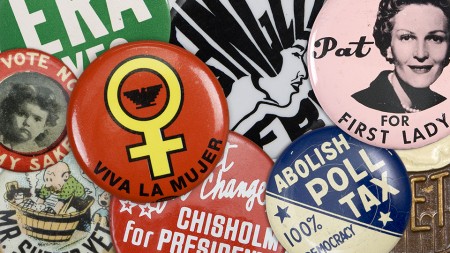
Rise Up L.A. features more than 100 objects that chronicle the momentous victory and the struggles women faced in the century since. Women have strived for equity in education, jobs, and in their communities through acts of determination and with considerable pluck.
“We wanted to make sure that it wasn't whitewashed, that it was clear that not everyone got the right to vote,” said NHM’s Exhibition Developer Danielle Sommer, “and also to make sure it was apparent that [in the United States] women's suffrage was a continuous fight, not solved by the 19th amendment.”
Jobs, Money, Power
The variety of historical objects in Rise Up L.A. speaks to those struggles women faced: applying for schools they were barred from attending, working in jobs where they were underpaid, marching in protests, and (finally) voting. In one display case, there is a mayoral ballot from 1911, the year women in California earned the right to vote for the first time, and a yearbook of a young woman who was forced to attend high school in a Japanese internment camp. There’s a badge and uniform worn by Laura Oakley as chief of police for Universal City (home to the newly opened Universal Studios) in 1913. (Her appointment may have been a publicity stunt, but life soon imitated art because in the years directly following, women started to join the Los Angeles Police Department.)
The exhibition also presents images of women in the labor force, including a 1963 photograph of Judi Burgess, the first female carpenter apprentice in Orange County. That year, the Equal Pay Act was signed into law. At the time, women generally earned 59 cents for every dollar earned by men, and the new act was designed to end these inequalities.
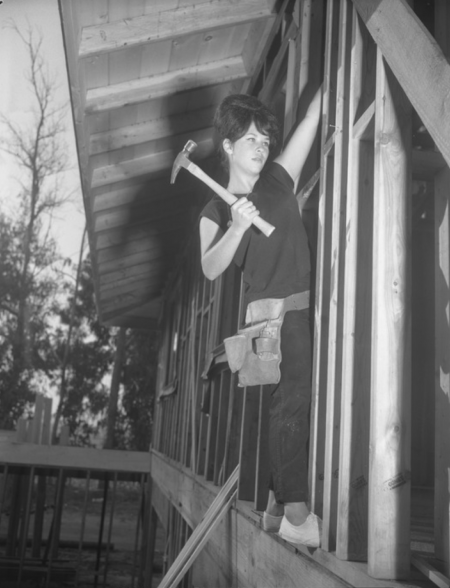
Donna Pungprechawat, NHM’s Exhibit Supervisor, identifies with Burgess’s story of forging a career path in a male-dominated field. “That picture of her with her tool belt holding onto the framing of the house, I connected to that. I draw inspiration from seeing the passion she had for her work, to advocate for women in her own way, and help the movement forward.”
Under Pungprechawat’s leadership, the team overcame many logistical and technical hurdles while building Rise Up L.A. One example is the “Button Wall,” a central feature of the exhibition. It consisted of 104 political buttons that women have worn on their frilly blouses, power suits, and T-Shirts over the past century to broadcast their support for different causes and candidates. The message: women over the last 100 years didn’t vote in a bloc (as was feared), or in any predictable fashion. This assemblage of circular disks with eye-catching designs includes one with a cartoonish baby crying (the message: women should be wives and mothers, and not flex their political power.) On the empowering side of the equation are pins representing important highlights in women’s history: the (never enacted) Equal Rights Amendment, the campaign of Shirley Chisholm (the liberal first Black woman elected to the Congress), and the Black Lives Matter movement.
To make this wall of political buttons visually powerful, the registrar took precise measurements using just text and photos and added those to a spreadsheet. The designer then mocked up the display on a computer, and sent a full-scale printout to the conservator who sewed them into a fabric-covered, laser-cut perforated plexiboard or acrylic frame built by the fabricators, all while safer at home or socially distanced in the museum’s galleries.
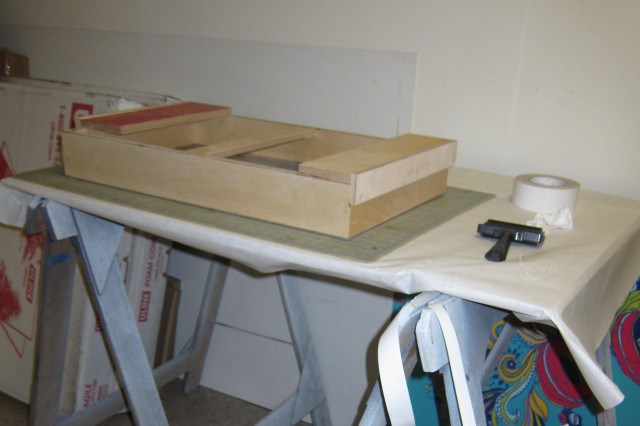
To display the exhibition's standout piece, a wall of 104 buttons that women wore over the decades in support of many different causes and candidates, the team built wooden frames with laser-cut acrylic faces.
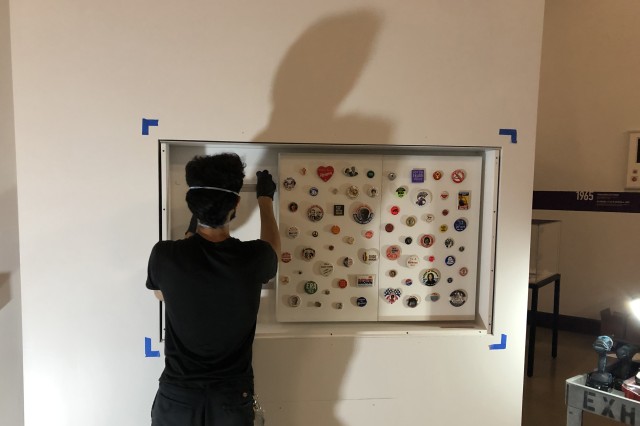
All while safer at home or socially distanced in the museum’s galleries, the team collaborated to curate, arrange, build the wall of buttons. Here, Eric Sick, a museum fabricator installs the piece in the gallery.
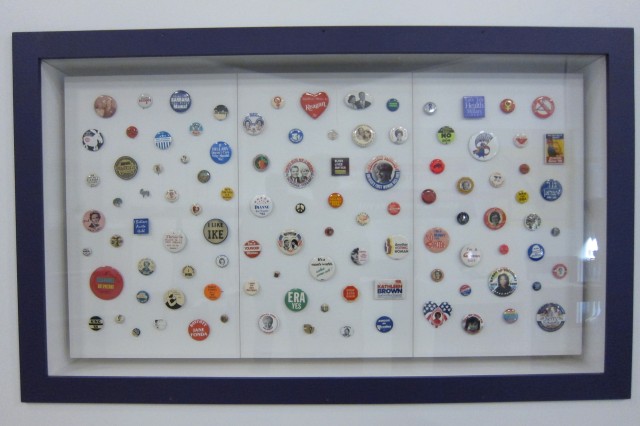
These colorful political pins were all hand-sewn onto a laser cut perforated board covered by cloth by conservators and designers who were working on and offsite. Good thing they were flat and circular!
1 of 1
To display the exhibition's standout piece, a wall of 104 buttons that women wore over the decades in support of many different causes and candidates, the team built wooden frames with laser-cut acrylic faces.
All while safer at home or socially distanced in the museum’s galleries, the team collaborated to curate, arrange, build the wall of buttons. Here, Eric Sick, a museum fabricator installs the piece in the gallery.
These colorful political pins were all hand-sewn onto a laser cut perforated board covered by cloth by conservators and designers who were working on and offsite. Good thing they were flat and circular!
That wall of buttons was one of several displays of ephemera—material originally expected to have short-term shelf-life, popularity, or usefulness. There is a pair of large, homemade pink-and-black posters carried by members of ACT UP (AIDS Coalition to Unleash Power) to a Lesbian and Gay Pride Parade in Long Beach in 1989.
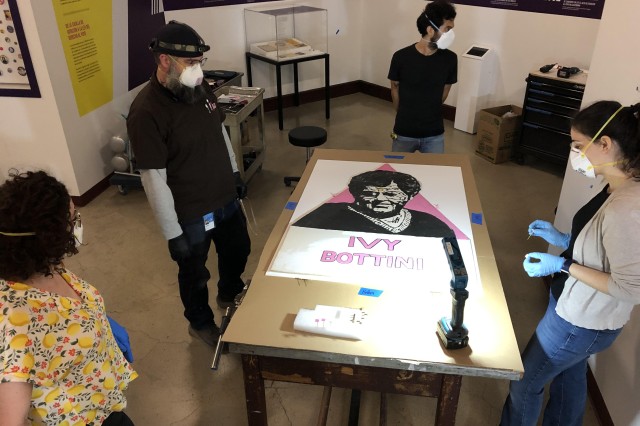
Conservators and fabricators examine a pink-and-white poster that belonged to members of ACT UP (AIDS Coalition to Unleash Power) who carried them to the Lesbian and Gay Pride Parade in Long Beach in 1989.

Another pink-and-white poster that belonged to members of ACT UP (AIDS Coalition to Unleash Power) who carried them to the Lesbian and Gay Pride Parade in Long Beach in 1989.
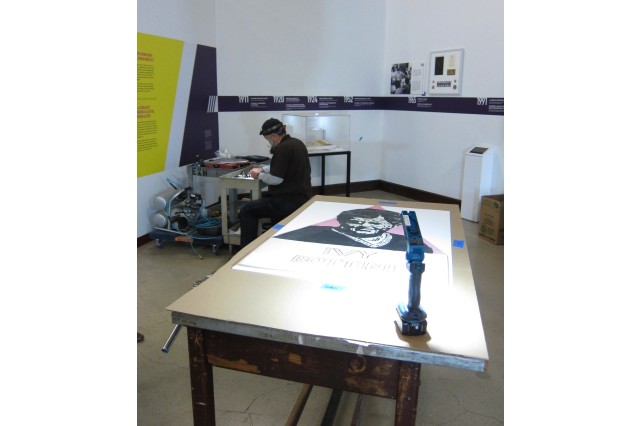
Scott Newell works on one of the mounts that he designed and fabricated for the ACT UP poster case.

The team is cognizant that light can damage objects, so they minimized light exposure for sensitive objects, paper and textiles.
1 of 1
Conservators and fabricators examine a pink-and-white poster that belonged to members of ACT UP (AIDS Coalition to Unleash Power) who carried them to the Lesbian and Gay Pride Parade in Long Beach in 1989.
Another pink-and-white poster that belonged to members of ACT UP (AIDS Coalition to Unleash Power) who carried them to the Lesbian and Gay Pride Parade in Long Beach in 1989.
Scott Newell works on one of the mounts that he designed and fabricated for the ACT UP poster case.
The team is cognizant that light can damage objects, so they minimized light exposure for sensitive objects, paper and textiles.
Other collectibles include World War II-era recruitment materials designed to persuade women to replace men on the assembly lines and in defense industry jobs (5 million women did). There are red-white-and-blue Women's Army Corps pamphlets, a "Women at War'' print, and a U.S. Public Health Services poster featuring a woman dressed in a bright blue uniform with the headline: ‘Wears styles designed for victory’.”
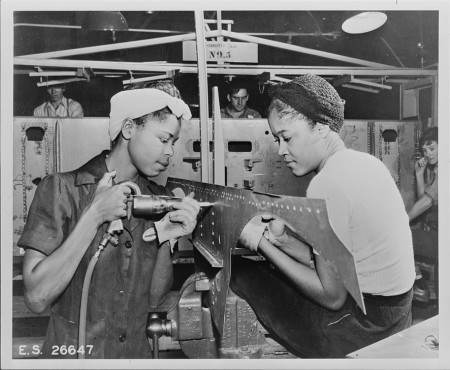
All of these carefully conserved objects are part of NHM’s History Department Collection. To elevate these conversation starters and showcase them for maximum readability, the museum’s designers, fabricators, prototypers and lighting experts built display cases in-house, and illuminated them just so. “When we have multiple objects in a case, we take great care to arrange them and light them without casting shadows on each other,” says Liam Mooney, Supervisor of Media and Lighting. “There’s a lot of time spent finessing so shadows fall in the right spot so it's minimally distracting as possible.” Grier Mirling, a Senior Exhibits Technician, agrees that identifying stumbling blocks is a function of the trade. “Problem-solving is nonstop,” he says. “We have to tweak things and always customize.”
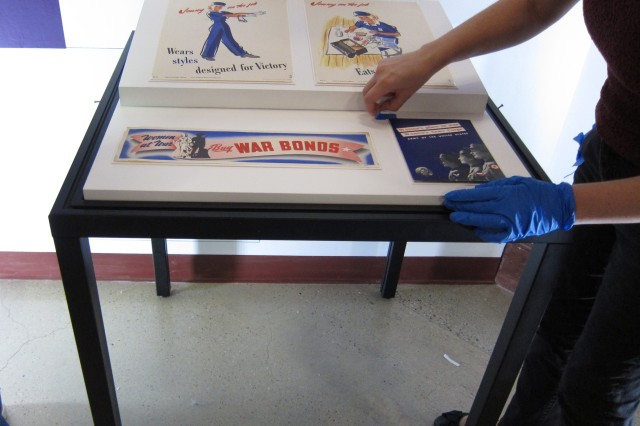
Careful placement of delicate objects like these pamphlets and war bonds poster from WWII is critical for the optimal user experience. When there are multiple objects in a case, the team takes great care to arrange and light them so shadows fall in the right spot.
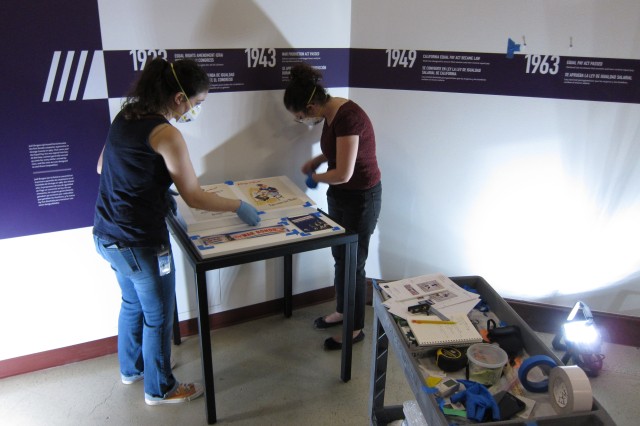
The team is always thinking about accessibility. That's why they built elements inside this case in-house and angled them in ways that would make them easier to read. The team also built much of the furniture in the show to make sure it was the right height for people who use wheelchairs.
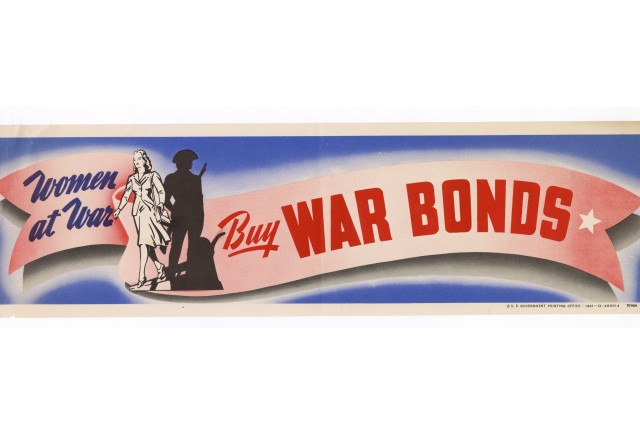
Women weren’t always welcomed into the workplace, but as labor shortages increased, so did recruitment. The government printed materials like this "Women at War" print circa 1942 to persuade women to replace men in defense plants and on assembly lines.
1 of 1
Careful placement of delicate objects like these pamphlets and war bonds poster from WWII is critical for the optimal user experience. When there are multiple objects in a case, the team takes great care to arrange and light them so shadows fall in the right spot.
The team is always thinking about accessibility. That's why they built elements inside this case in-house and angled them in ways that would make them easier to read. The team also built much of the furniture in the show to make sure it was the right height for people who use wheelchairs.
Women weren’t always welcomed into the workplace, but as labor shortages increased, so did recruitment. The government printed materials like this "Women at War" print circa 1942 to persuade women to replace men in defense plants and on assembly lines.
Among those objects installed with finesse are an actual voting booth that provides Angelenos an opportunity to register to vote onsite, and a dramatic back-lit wall featuring a montage of larger-than-life photos of women holding colorful placards. That make-your-own-protest-sign call to action is an invitation to declare one’s views on a range of topics, including women’s rights, workers’ rights, education, and the L.A. community.
To test that poster wall’s user friendliness while also adhering to the museum’s arduous COVID safety protocols, the audio/visual team set up the interactive in the museum’s spacious Grand Foyer. They asked staff working in the outdoor Nature Gardens to let the exhibition team know if they were able to successfully navigate through all the steps. Based on that feedback the team ended up changing a number of things, including adding new slogans and making the experience more intuitive.
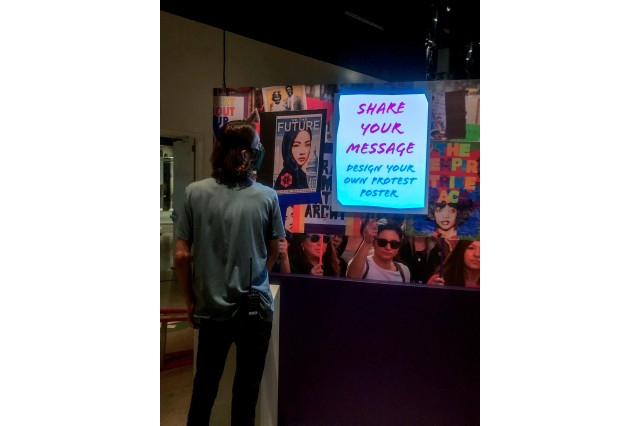
The exhibition's make-your-own-protest-sign is call to action, an invitation to declare one’s views on a range of topics, including women’s rights, workers’ rights, education, and the L.A. community.
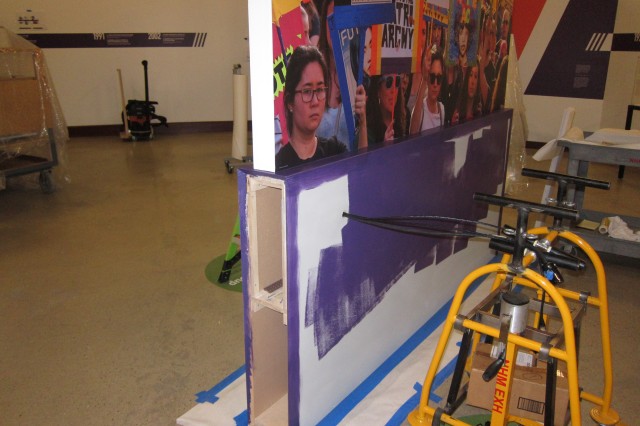
The protest poster wall gets a new purple paint job. The freestanding furniture in the center of the room was once part of another museum exhibition in the same gallery. “We do our best to reuse the materials," says Liam Mooney, "to minimize the number of new holes we put in the floor.”
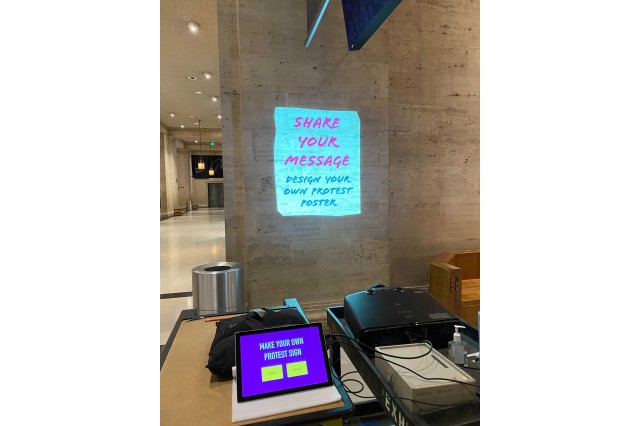
To test that poster wall’s user friendliness, the exhibition team queried staff to see if they could
successfully navigate through all the prompts. Feedback always helps them refine the process.
1 of 1
The exhibition's make-your-own-protest-sign is call to action, an invitation to declare one’s views on a range of topics, including women’s rights, workers’ rights, education, and the L.A. community.
The protest poster wall gets a new purple paint job. The freestanding furniture in the center of the room was once part of another museum exhibition in the same gallery. “We do our best to reuse the materials," says Liam Mooney, "to minimize the number of new holes we put in the floor.”
To test that poster wall’s user friendliness, the exhibition team queried staff to see if they could
successfully navigate through all the prompts. Feedback always helps them refine the process.
The audio crew also invented a soundscape for Rise Up L.A. to evoke a century of striving and success: sounds of jackhammers, singing sisterhoods, chants at protest marches for equality and justice. One can almost hear the voices of early suffragettes, like a subliminal soundtrack, cheering on the history-defining endeavors of Angelenas. “It wasn’t one moment in time, which is why there are so many stories,“ says Pungprechawat, “it was a million steps by everyday women doing amazing things.”
While the exhibitions team was busily creating the physical exhibition, they launched an online one, too! Experience the Rise Up L.A. exhibition here.
